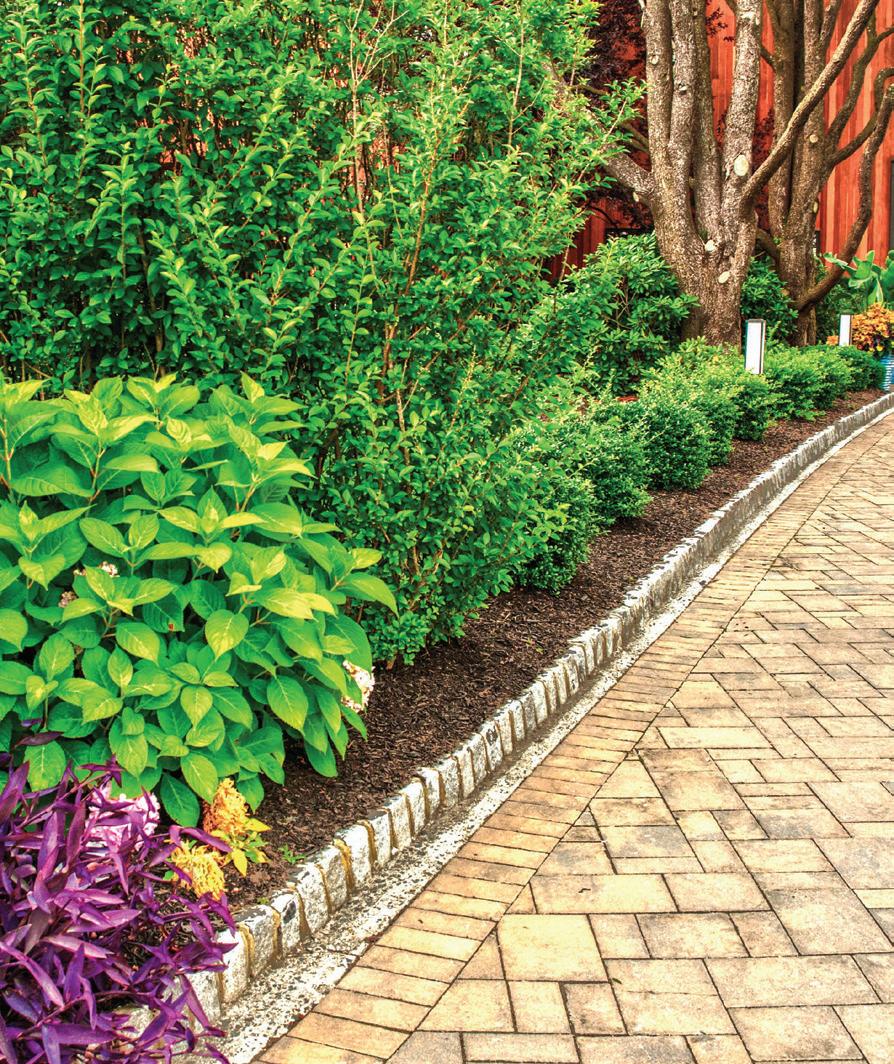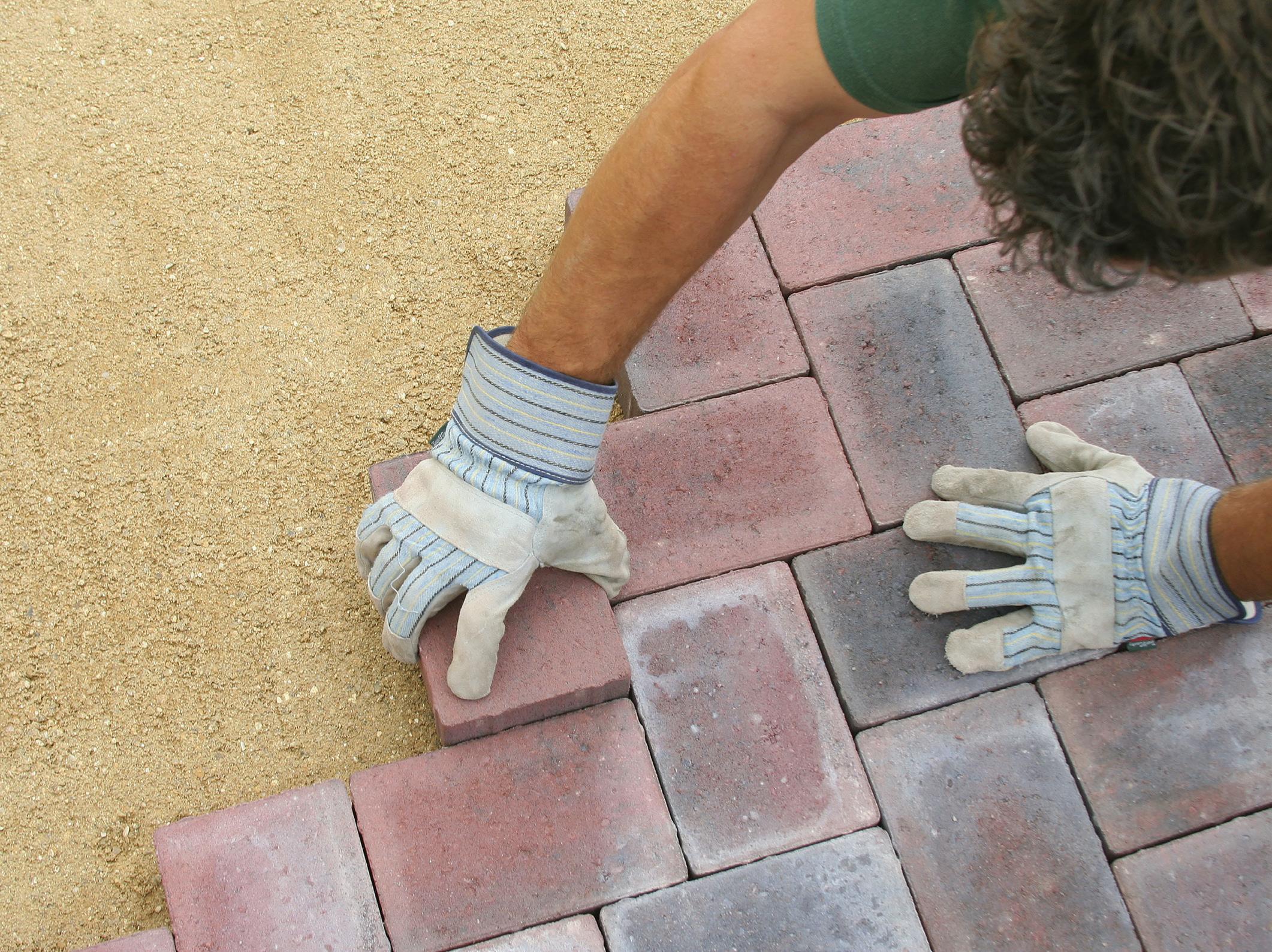
5 minute read
Enjoy your yard even more by adding a patio

Metro Creative Connection
5 things to consider when planning your perfect backyard getaway
By Jennifer Huberdeau
Did you contemplate upgrading your backyard last summer, only to find that patio materials were scarce to non-existent? If so, you’re not alone.
“With everyone staying home because of COVID, there was an uptick in demand for patios and, halfway through the season, suppliers ran out of pavers,” said Dean Maynard, founder/owner of Maynard Landscape and Design in Lanesborough, Mass.
The demand is expected to be just as great this summer, but supplies are expected to be able to keep pace this time around.
“We’re expecting another great year,” Maynard said.
But, as with any home improvement project, there are a number of items that need to be considered before work can get underway. Before heading out to your local landscape and design center, here are a few details to think about:
1. Size matters
There’s no one-size-fitsall approach to patios, says Chris Millerick, of WW Building Supply in Wilmington, Vt.
“It really depends on the individual situation,” he said. “Some people want a square patio, some want circular. It can be as small as an 8-by-8foot square.”
But if you’re looking to use your patio as an outdoor dining space, Maynard says the bare minimum is a 10-by-10-foot or 12-by-12foot patio.
“Most of what we do is either 13-by-13-feet or 14-by14-feet; which allows for a good-size table and five to six chairs,” he said.
Knowing what size patio you’re looking to install, and the shape of the patio, will be helpful throughout the early design stages.
“Whether you’re buying the materials yourself or you’re working with a contractor, knowing the size ahead of time is going to help you estimate the cost of materials. Pavers are not cheap,” Maynard said.
There’s a lot to consider when it comes to the material you use to build your patio, from stamped concrete to traditional concrete pavers. Photo courtesy of Metro Creative Connection.

Metro Creative Connection
2. Location is more important than you think
“The biggest thing people worry about, whether it’s a patio or a firepit is, ‘Where are we going to put it? Should it be next to the pool? Next to the house?’” Millerick said.
The location of a patio is important when considering aesthetics, convenience and the overall budget.
“In the backyard, we suggest that the patio is somewhat close to the house. When you’re carrying a tray of food out, you don’t want to walk too far with it,” Maynard said.
But, he warns, putting a patio too close to a house that is two stories or more can also be problematic — the building will seem like it’s looming over you. Plants and lighting are also important. Putting plantings or some type of landscaping between the patio and a building will soften the aesthetics.
“You also want to consider placing a patio where it will catch the afternoon sun,” Maynard said. “Most people spend their afternoons and evenings out on the patio.”
3. It's not as simple as laying a few bricks
There’s a lot to consider when it comes to the material you use to build your patio, from stamped concrete to traditional concrete pavers.
“Concrete pavers come in a variety of styles and sizes,” Maynard said. “There’s bluestone and also rustic Goshen stone. We hardly use red brick anymore because the cost is significantly higher.”
Concrete pavers, Millerick said, have a compressive strength of 8,000 pounds per square inch, making the dense concrete very durable.
And, concrete pavers come in a variety of shapes.
“They can be designed to look like stone. They come in blended colors; different sizes in the different palettes and different designs,” he said. “There are so many different choices. When working with clients, I can say to them, here are the pluses to this choice or these might be the advantages/ disadvantages of this choice.”
Pavers and stone can range in price, from inexpensive to very expensive.
Concrete pavers can range from $3 to $15 per square foot, before labor costs; which can be $25 to $35 per square foot or more depending on the location and required work.

Metro Creative Connection
4. Keep construction costs in mind
Will the contractor have direct access to your yard? Or will they have to transport items via a wheelbarrow? A seemingly simple detail like this can impact your overall budget, driving up costs unexpectedly. “There is a lot of prep work that goes into the laying of the pavers, so they stay in place and don’t move,” Millerick said. “If you see a patio or walkway that is wavy, it means the base wasn’t properly laid.”
Typically, Maynard says, a proper base for a patio requires the removal of about 3 to 4 tons of soil for an 8- to 10-inchdeep base with a pitch of 3 to 5 percent for drainage.
The base is typically filled with a layer of sand and gravel, on which the pavers are set. A stone edge needs to be laid to keep the pavers from moving.
“Once everything is done, the joints need to be filled. We recommend polymeric sand,” Millerick said. “It’s an added expense, but when it hardens, it prevents weeds and ants from taking root between the pavers.”
5. Design with function in mind

Metro Creative Connection
A firepit can be as simple or as fancy as a homeowner wants it to be, but make sure your design keeps its main purpose in mind — socializing in front of a fire.
“I recommend putting it on the edge of the patio space,” Maynard said. “If you put it in the middle of your patio, you use up all the space and won’t have room for a table or anything else when you’re not using it.”
By putting it on the edge of the patio, guests can have a choice of sitting on the patio or out on the lawn.
“It’s a great way to get out, sit around and enjoy the evening,” he said
And remember, a firepit’s location is just as important as that of the patio.
“Make sure your fire pit is downwind,” Maynard says, “so the fire isn’t blowing smoke back into the house. This applies to any firepit or grill.”
You’ll also want to make sure the location adheres to local fire code regulations and not set under any structures with roofs, hoods or canopies.
Knowing what kind of firepit you are interested in ahead of time also can speed up the design process.
And you’ll want to figure out how much you’re willing to spend. A simple, yet safe, firepit kit, Millerick said, can cost a few hundred dollars. Fancier kits, mortarless designs or custom-designed firepits that incorporate stonework can cost hundreds more.
“It comes down to what people are looking for — square or round; simple or more involved, ” he said. •








